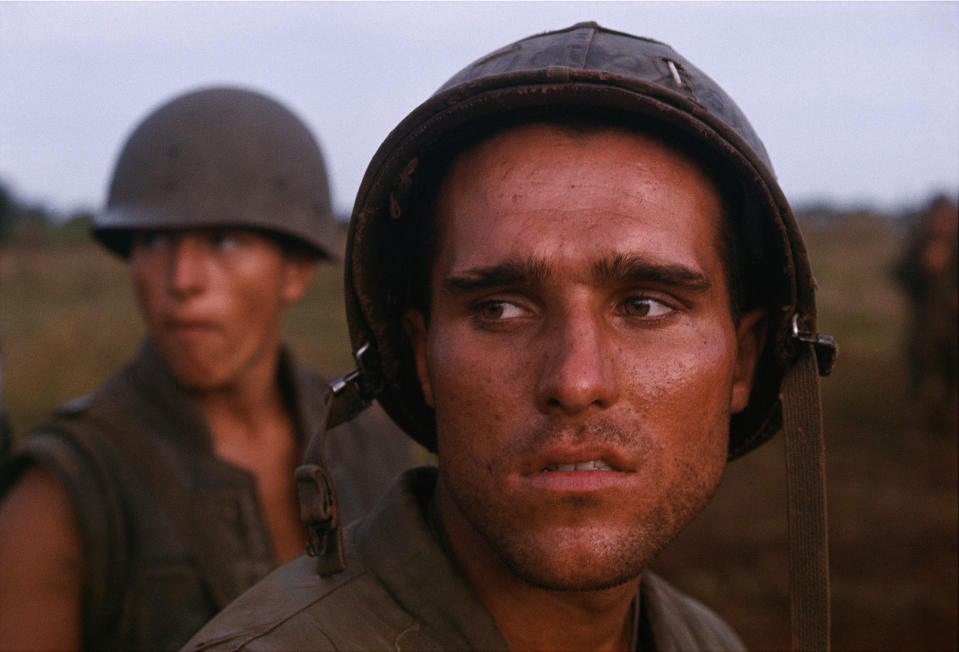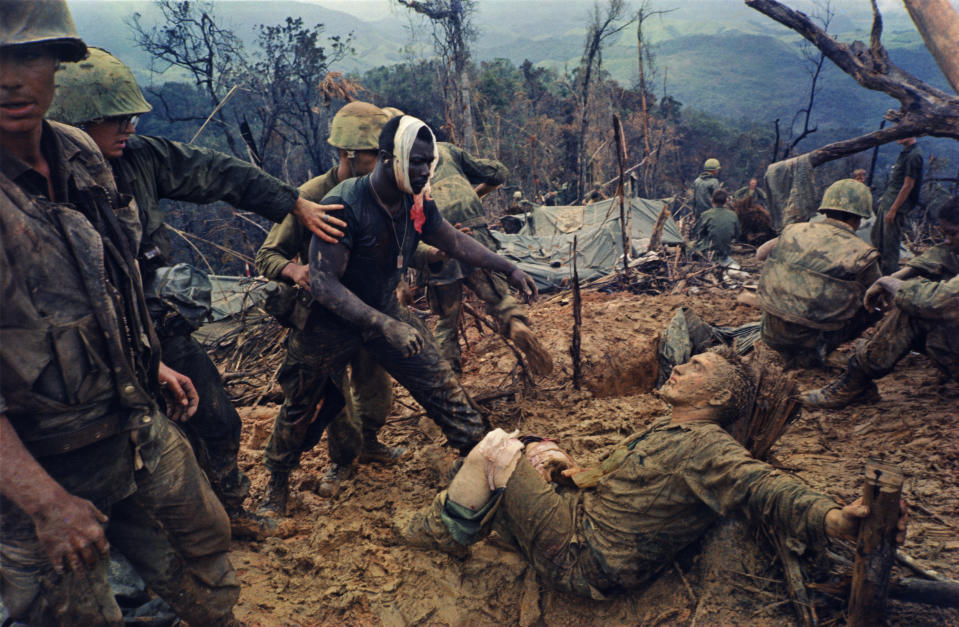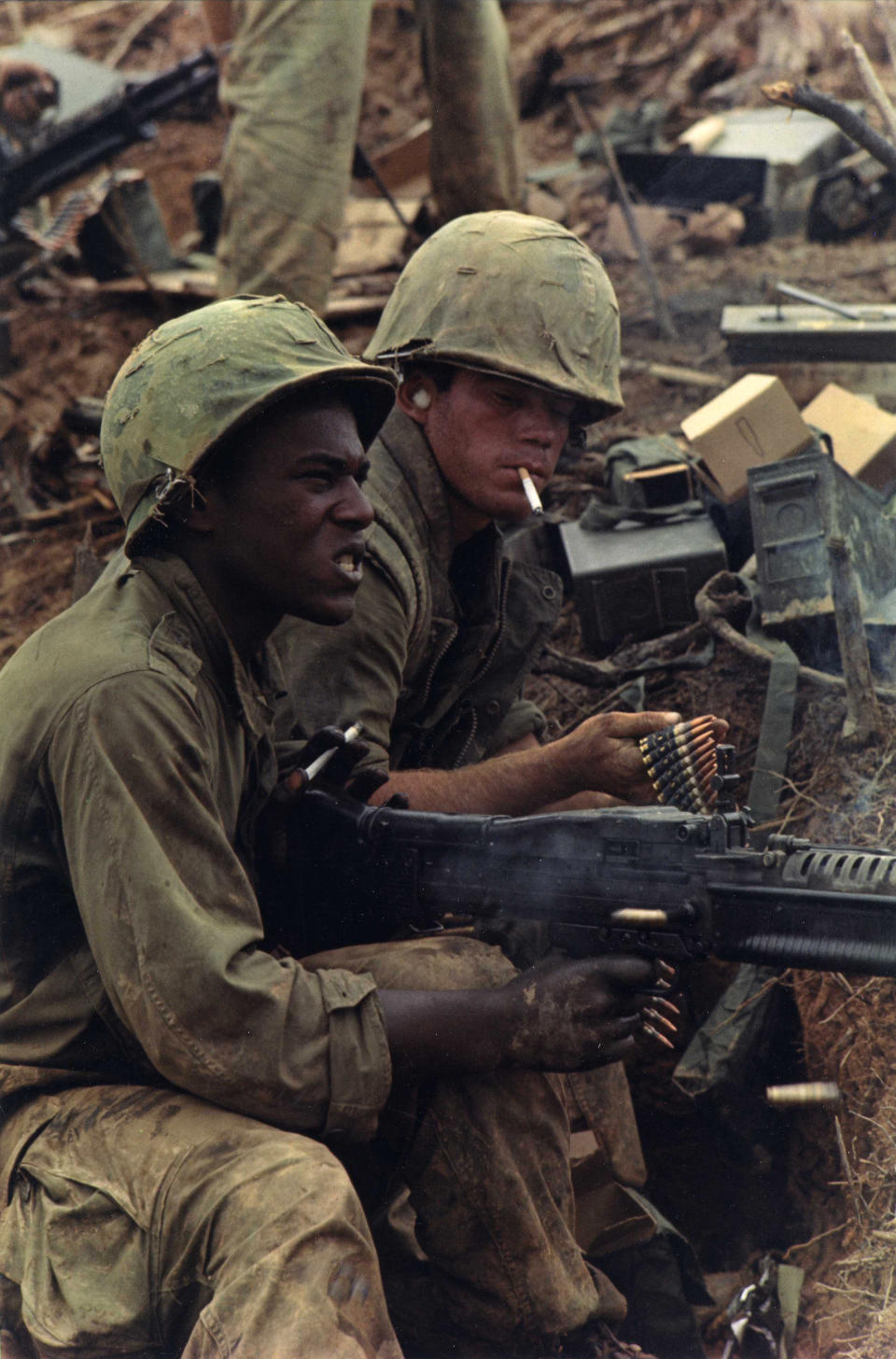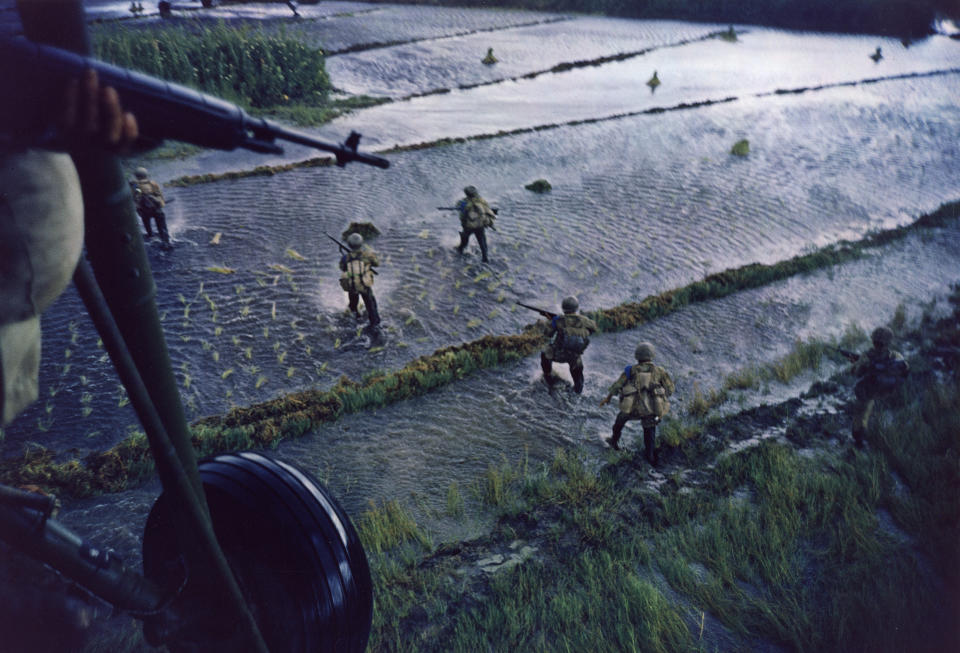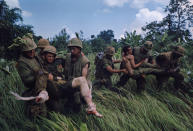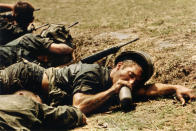Larry Burrows revisited — iconic images of the Vietnam War
In the 1960’s, Larry Burrows became the preeminent photographer documenting the Vietnam War. His iconic images of the humanity and inhumanity of that war haunt us to this day. Yet before he covered the Vietnam War, he was already an accomplished photojournalist working for Life magazine alongside photography greats like Robert Capa.
Larry Burrows Revisited, now at the Laurence Miller Gallery, features nearly sixty photographs, including his images of the Vietnam war. The exhibit exemplifies Burrows’s career as one of the great humanist photographers of the Twentieth Century, as well as a pioneer in the use of color.
Burrows was born in London in 1926. At age 16, he began working in the lab of Life magazine’s London bureau. Poor eyesight kept him from getting a hoped-for position as an Army or Navy photographer in WW II. Instead, he had to content himself with printing thousands of photos taken by Life’s great photographers of that war.
His photographs from the 1950s, taken while he was on assignment for Life, were widely published. His memorable image of British Prime Minister Winston Churchill — taken at an RAF station in 1954 as he stood with his back to the camera — typified Burrows’ uncanny ability to capture layers of nuance and meaning through a person’s body language. He also took many portraits — Bridgette Bardot, C.P. Snow, T.S. Eliot and Louis Armstrong.
When the opportunity to cover the Vietnam War came up, Burrows was ready. He went there in 1962, and as David Halberstam says in his introduction to the book Larry Burrows Vietnam, “From the start, the best photos from Vietnam were his. He had a feel for the war and the people fighting it … and he understood that … this was the ultimate assignment, demanding the ultimate risk.” Many Burrows images were incorporated into Ken Burns’ recent documentary “Vietnam.”
Burrows’s best-known series is One Ride with Yankee Papa 13, which Life published on 14 pages in 1965. From the opening spread, where a young, confident James Farley is introduced before a mission to airlift an infantry battalion, to its bloody sequence of the ensuing firefight and failed rescue, to Farley’s emotional return to base, the photo essay captures the universal humanity of man embroiled in the inhumanity of war. Burrows covered the war until 1971, when the helicopter he was riding in to photograph the invasion of Laos was shot down, killing all aboard.
Larry Burrows Revisited exhibition will be on view at the Laurence Miller Gallery in New York City through June 29, 2018.
See more news-related photo galleries and follow us on Yahoo News Photo Twitter and Tumblr.
Recovery of wounded under fire, near Hill 484, Operation Prairie, October 1966. (Photograph by Larry Burrows)

 Yahoo Movies
Yahoo Movies 

